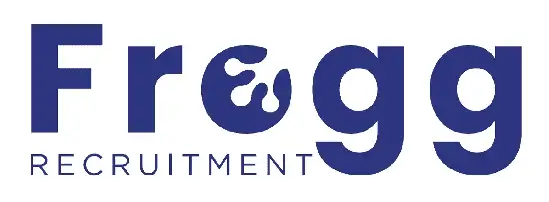Difference between contingent and retained recruitment?
What is the difference between contingent and retained recruitment?
Here at FROGG Recruitment, we specialize in Contingent recruitment. Contingent recruitment is more like traditional where the client supplies job specs and we do the recruitment.
How FROGG Recruitment can assist you as a valuable client.
The services we offer include the following but are not limited:
We recruit permanent and contract employees within various industries and sectors.
We work accordingly to your brief, job requirements, and skills, saving even more time.
They handle all the administration and communication between the employer and employee.
They can do all the checks like ITC, qualification, criminal, and employment
We can even arrange for more specialized checks and assessments.
They’re a trusted source of up-to-date market intelligence if it comes to market-related salaries.
As a reputable recruitment agency, we will also do all advertising, shortlisting, and interviewing.
We will only submit relevant applicants who match your job requirements.
You have the final decision on who you employ, it’s all up to you. We can only advise.
The recruitment and appointment process progresses efficiently. We work on a contingent recruitment service which means you pay when the candidate starts.
They offer exceptional after-service, meaning we continue to grow and build client relationships.
Finding a quality candidate who’s a great fit for your BUSINESS can often be a time-consuming task. There are a variety of recruiting agencies available to handle this responsibility for you. Learn what contingency and retained recruiting are. Discover the difference between the two, and review tips to help you decide which is right for your business.
Contingency recruiting involves hiring a recruiting firm to locate candidates to fill lower to mid-level open roles. Companies may hire more than one contingency recruiting firm to help quickly find a great fit for the position. They often do this to obtain several resumes for the role. To give themselves plenty to choose from or to hire several people to fill certain positions.
For instance, if a company’s looking to fill five content writer positions. They’ll hire several contingency recruiting firms to find many potential candidates to fill all the open spots. The company’s human resources team may also conduct their own recruitment efforts to ensure they’re reaching a wide audience.
What is retained recruiting? How is it different from Contingent recruitment?
Retained recruiting refers to retained search agencies that often recruit for executive and senior-level roles. Additionally, many of these recruiters are expected to have advanced knowledge of the industry they’re in to better understand what the company needs in a great employee. Moreover, these recruiting firms often charge a placement fee based on the annual salary their candidate receives when they’re hired. Furthermore, the fee amount varies depending on the expert level of the recruiting firm and recruiter you work with.
To ensure your employees are well-trained and prepared for their new role, some retained recruiting firms also provide coaching, training, and onboarding training sessions. This ensures the employee is more aware of their job duties by their first day and removes this responsibility from your HR team to allow them to focus on big-picture tasks. Retained recruiting firms work on an exclusive basis, so they’re the only recruiting company you’re allowed to work with.
Differences between contingency and retained recruiters
There are various differences between contingency and retained recruiting firms. Common differences include:
Payment methods
Each of these recruiting firms follows different procedures when it comes to charging for their time. Contingency search firms typically recruit for your company for free and don’t receive payment for their work until their candidate is hired. This usually means they’ll work hard to provide you with many candidates at once to increase the chances of you selecting their selections.
Payment for Retained Recruitment – There are usually three sections of payment you’ll make to retained recruiting agencies. The first is the retainer you’ll pay when the search first begins. The next is on a certain milestone date that you agree on with the recruiter beforehand. Your final payment is provided when the candidate is successfully hired at your company. If the new hire leaves before an agreed-upon date between you and the recruiter, they offer a guarantee to replace that candidate with someone who has similar or more advanced skill sets. We do Contingent recruitment services and not retained recruitment, a big difference in paying invoices.
Relationship with the company
When you work with a retained recruiting agency, you’re essentially establishing a long-term relationship with them. Many retained recruiting firms require companies to sign an exclusivity form stating that they’ll only work with their agency to find and hire new candidates. They’ll take their time getting to know your company, industry, and hiring needs better to find the best candidates for you.
If you hire contingency firms, you typically have the option to employ several different ones to increase your influx of qualified candidates. This means the contingency firm usually works briefly with you to establish your needs and preferences for the role before finding several potential candidates. They don’t often have a close relationship with you, so you’re able to easily move on to a different firm once your job search process is over.
Quantity vs. quality
Retained recruiting agencies are more focused on finding a handful of quality employees who are perfect for the role. They spend a significant amount of time evaluating your business’ needs, locating talented candidates, and preparing candidates for their upcoming interview with you. This guarantees you’ll find an impressive candidate who aligns well with your company goals, values, and job responsibilities.
Contingency firms focus more on getting you a large number of candidates who could potentially be great fits for the position. Many of these recruiters review the needs and preferences listed on your job descriptions and find candidates with resumes that contain a few keywords matching that information. This helps them provide you with a significant amount of candidates with relevant skill sets and qualifications, but it doesn’t guarantee that these candidates are great fits for the position and company.
Tips for considering which type of recruiter is right for your business
Follow these tips to help you determine which recruiting agency to hire to help you fill your open positions:
Determine your job search goals
Before you pick a firm, sit down with your team to determine your company’s recruitment goals. If your organization is smaller and doesn’t yet need to hire a significant number of employees, contingency recruiting could be the best temporary option for you. If you have multiple positions to hire on an ongoing basis as your business grows, consider using a retained recruiter. They’ll work to build a relationship with you and will recruit strong talent when needed.
Consider the seniority level of the position
If you’re searching for a candidate with an advanced skill set who will work in an executive or leadership role, retained recruiting is the best option. They’ll conduct extensive research on candidates with impressive leadership skills and plenty of experience. This ensures you hire an impressive candidate who will make logical and effective big-picture decisions for your company. For lower to mid-level positions, consider hiring a contingency firm to help fill them.
Establish your timeline and urgency of the role
Think about how soon you’d like to fill your open positions. If you have urgent tasks that need to be completed soon for your company, a contingency recruiter will help you quickly find someone with the skill set to complete those tasks. Work with a retained recruiter if you have plenty of time to assess candidates and make sure the one you’re hiring is perfect for the role.
Decide how many employees you need to hire
Contingency recruiters are great at finding several candidates to fill your open positions. If you have multiple roles that need you need to fill soon or if you’d like a large selection of qualified candidates to choose from, find a few contingency recruiters with great ratings to assist you in this job search.
Finding the best recruiting firm for your company depends solely on the hiring needs and preferences of your organization. To help you get started, work closely with department managers who have positions they need to fill to determine what they prefer in an ideal candidate.
If you want to find out more about what we do, view Our Expertise. Follow us on our Social pages Facebook, LinkedIn and Instagram and be actively involved in newsletters and recruitment blogs.
Related Posts
-

High performing and high potential...
- 2 Comments
- 1232
Continue ReadingThe impact of high performing and high potential employees on employers
Determining which of your staff members are high performing and high potential employees can be difficult as an employer. However, precisely what distinguishes high performance from high potential?
Firstly, the recognition among business executives that the success of their organizations depends on the caliber of their talent pipeline. Additionally, talent management is what caused the change toward emphasizing good employer branding. Furthermore, employer branding plays a crucial role in the ability to distinguish between high potential and high performing employees.
What they are: High performing and high potential employees
High potential employees:
A high potential employee, or HIPO, is a person who has the ambition, drive, and aptitude to advance to the top of the organization and pursue success there. Since it shows their potential, HIPO personnel exhibit a thirst and ambition for further responsibility.
They can take initiative, are quick thinkers, and have the soft skills necessary to become part of the future generation of leaders. Ability, social skills, and drive are three characteristics that companies should look for in high potential candidates.
Ability:
In addition, high potential personnel can develop the abilities, skills, and knowledge required for a leadership position. Furthermore, they have an excellent IQ, making it easy for them to learn new things and use them in their profession. Additionally, they exhibit inspiration, vision, and creativity.
Social skills:
Moreover, high potential workers possess the interpersonal abilities necessary to oversee others as well as themselves. Additionally, this involves the capacity to remain composed under duress and overcome obstacles. Moreover, they can build and preserve fruitful, productive connections with their colleagues and behave themselves with respect and honesty.
Drive:
Furthermore, HIPO employees possess the drive, ambition, and work ethic needed to succeed in their positions and advance within the company. Additionally, they might be prepared to endure personal adversity to further their profession.
High performer employees:
Moreover, high-achieving employees provide valuable contributions to the company through their labour, ideas, and perceptions. Furthermore, their outstanding work stimulates creativity, efficiency, and productivity, which improves corporate results.
Additionally, these are workers who frequently advance to more difficult positions inside the company. Lastly, for almost any firm to continue to succeed, high performers are essential. Finding top performers and high potential personnel is crucial for organizations. These are the workers who can significantly improve the organization and the intended results.
This benefits both employee and employer
Companies must make sure that supervisors and managers recognize the importance of great achievers. Additionally, they need to have the information and resources needed to recognize them from regular encounters with their direct reports. This is why strategic thinking in interviews from both employee and employer is of utmost importance.
Therefore, it is crucial to ensure that top performers do not skip forward or take advantage of other chances. Moreover, this recognition of top performers should be a component of ongoing company operations and coaching. It should also be included in the performance management process.
High performers can be recognized by their productivity or results. In addition, they demonstrate a good attitude and make constructive contributions. Moreover, they can even be identified by their capacity to provide others with excellent service and assistance. Once these high performers have been discovered, it is critical that you take the necessary action to provide them with the resources and assistance they require to continue developing.
Identifying high performing employees
Many employees reach their objectives. However, top performers go above and above. After achieving their objectives, they ask, “What’s next?”
In addition, give stretch assignments to personnel who are motivated to achieve their goals. In addition to aiming higher, high achievers are always looking for ways to improve their abilities and pick up new ones. Therefore, use the goals you set for your high-performing staff to help them grow.
Additionally, high performers do not wait for their manager to schedule them for a training session. In fact, even if most employees are receptive to learning and growth, they take initiative and may be the ones willing to spend their own money and effort on professional growth.
Furthermore, managers that have top achievers in their midst should allocate a small additional sum of money to provide them with opportunities for professional growth. It is a wise investment to develop your top performers.
Moreover, it is important to ensure that high performers are genuinely justifying their participation by imparting their knowledge to the team. This will guarantee that resources are being allocated appropriately.Most employees are receptive to criticism. However, what makes a difference is how each person responds to the discussion. Moreover, high achievers consciously look for feedback to increase their self-awareness and proficiency.
In addition, every employee should receive feedback from their managers on a regular basis. Furthermore, it is the morally correct thing to do. Additionally, when speaking with high performers, it is important to remember that maintaining high performance is the aim. Therefore, structure the conversation appropriately.Employees will tell you they do high-quality work if you ask them. Nevertheless, few workers boast that they are just “phoning it in.” Furthermore, high achievers have a quality-focused approach that may seem excessive to others (or bothersome, depending on your perspective).
Consequently, it will be the goal of managers to figure out how to use this never-ending quest of perfection for the organization’s benefit. To increase quality, it can be feasible to assign top performers to task forces or project teams within the organization.Identifying high potential employees
Having a strong work ethic and a goal-oriented mindset is vital, but considering the expansion of the business distinguishes high-potential employees from regular employees. They aim to achieve exceptional work and contribute to overseeing the company’s overall success.
Long-term goals drive the organization. HIPOs possess the ability to make decisions wisely with proper planning. They aim to think about the future and make realistic long-term goals that align with broader growth opportunities.
Only possessing the hunger to grow and eagerness to learn is not enough. A high-potential employee never hesitates to take the lead and does not need to be given instructions. They come forward to learn new things and take the lead.
Resilience is a powerful tool that every leader possesses. Situations can become dodgy at times, and a deserving leader must manage them calmly. Their minds should work sanely without thinking about the stress. They take challenging situations as growth opportunities and not hurdles.
Every business must work at high-speed to thrive in the existing competition. In order to do this successfully, a HIPO is extremely flexible and quickly adapts as changes come and go. They will make necessary changes in the existing pattern where demanded.
Leaders cannot only think about themselves. However, they need to think about everyone in the team and ensure they motivate employees to boost their productivity. Additionally, a good leader always ensures a positive relationship with the team members to keep them engaged.
Conclusion
Lastly, regularly evaluating and assessing the performance and potential of employees can aid in making informed decisions regarding promotions and career advancement opportunities. It is very important to overcome unconscious bias at this point. Know your high-performing and high-potential employees. For insightful content like this, head over to our blog page and follow us on our social media like Facebook, Instagram, Twitter, and LinkedIn.
-

Overcoming “Unconscious Bias” in Employing.
- 0 Comments
- 1315
Continue ReadingOvercoming “Unconscious Bias” in Employing.
Always aim to select the ideal individual for the position. Your choice to hire a candidate is based on their suitability for the position. Or at least, you think you are doing that. You sincerely think that your choice is the outcome of a deliberative process. And that’s entirely typical. Humans, however, are unaware that their choices are frequently skewed in some way. Overcoming “Unconscious Bias” in Employing is easier than you think, one needs to focus on what’s needed. Knowing How to improve your hiring process in 8 easy steps is very important.
Your decision-making is guided by an unconscious bias. a prejudice that affects employment decisions and whether you choose to work with “the right person” but that you’re not always conscious of.
What is unconscious bias?
The phrase “unconscious” or “implicit bias” refers to mental processes that enable people to behave in ways that support stereotypes even though our conscious minds would find that action to be in opposition to our moral code. Affinity bias, which occurs when people gravitate toward those who look, act, and think like they do, is closely related to unconscious bias.
Even in the early phases of hiring, you might be more influenced than you realize by a candidate’s résumé photo, name, or location. In other words, unconscious prejudice uses characteristics unrelated to the job to affect your choice, either favorably or unfavourably.
Why You Should Avoid Unconscious Hiring Biases
Biased hiring creates less diverse teams, even though diverse teams consistently outperform homogenous teams. In the end, unconscious bias may result in financial losses for your company.
Biased hiring practices can also increase employee turnover, which can cost a company up to twice the employee’s yearly compensation in lost productivity. Why is this topic Overcoming “Unconscious Bias” in Employing so important? It is crucial to understand the concept. Hiring staff can be a daunting task. If you follow the hiring guidelines it should not be that difficult at all. Top Recruitment agencies can assist with this, we are not bias-oriented and look for candidates that match the client’s requirements. Also important is to increase your employees’ work performance during periods throughout the year.
Bias-based hiring decisions—based on stereotypes, gender, physical attractiveness, etc.—can also have serious legal repercussions.
But fortunately, there are measures in place to lessen hiring discrimination (go straight to that part). Let’s first examine the most typical forms of hiring bias, though. Do any of these things ring a bell?
Common Types of Unconscious Bias in Hiring
Confirmation Bias
Confirmation bias occurs when we make an initial opinion of a candidate and then seek out and concentrate on data that confirms that impression. This involves ignoring red indicators that contradict our opinions and asking irrelevant, unimportant interview questions that validate our beliefs.
Attribution Bias
The propensity to blame a person’s actions on their personality rather than any external circumstances is known as attribution bias. In essence, it causes us to overvalue a person’s personality features and underestimate the impact of their unique situation. Still perplexed? As we explore this unconscious prejudice in greater detail, read on for some examples.
Affinity Bias
Affinity bias, also known as similarity bias, is the unconsciously occurring human propensity to seek out those with histories, interests, and beliefs that are like one’s own. While we may believe that we deliberately choose the individuals we associate with based on their moral qualities, the truth is that we often struggle to be unbiased in our choices of friends and acquaintances. People frequently gravitate toward others just because they make them think of themselves.
Halo Effect
The “physical attractiveness stereotype” and the “what is beautiful is also good” premise are other names for the halo effect. Overcoming “Unconscious Bias” in Employing the best candidate for the position at hand should not be the end of the world. It’s simply changing your mindset.
A form of cognitive bias known as the “halo effect” occurs when our overall opinion of a person affects how we feel and think about their character. In essence, your assessment of a person’s general impression (“He is nice!”) affects your assessment of that person’s specific characteristics (“He is also smart!”). People’s perceptions of one quality can influence their perceptions of other characteristics.
Horn Effect
In many ways, the horn effect is the exact opposite of the halo effect. The horn effect is a cognitive process whereby we quickly attribute unfavorable attitudes or behaviors to someone based on one element of their appearance or personality. Obese people, who regrettably are sometimes characterized as being sluggish, slovenly, or irresponsible, are an example of this. Hiring supervisors could have a “bad feeling” about someone right away based on their appearance, speech, or even body language.
Difference between the horn effect and the halo effect
Halo effect: A positive first impression that leads us to treat someone more favorably.
Horn effect: A negative first impression that leads us to treat someone less favorably.
Conformity Bias
When we consciously align our behaviors, beliefs, or attitudes with those of a group, conformity bias emerges. Other people can impact us even when they are not physically there because this transformation occurs in reaction to either real or perceived group pressure. For instance, how we perceive what other people are doing often determines how much energy we use at home, how much we pay in taxes, and how much we donate to charities.
One aspect of social influence is conformity, or the propensity to have the same views as the majority. The many ways that other people might affect our conduct are referred to as social influence. Small groups and society at large both exhibit a tendency to conform, which can be caused by both subtle unconscious influences and social pressure.
Gender Bias
Unintentional and automatic mental associations based on gender that are derived from customs, expectations, norms, values, culture, and/or experience are referred to as unconscious gender prejudice. Automatic associations are used in decision-making to quickly assess a person’s gender and gender identity and stereotypes. Organizations can work to combat gender bias and other forms of prejudice, so even when a person exhibits unconscious gender bias, this does not necessarily convert into prejudice in the workplace.
Affect Heuristics
This occurs when recruiters conclude a candidate’s suitability for the position without thoroughly weighing all the available data.
Simply said, you are making decisions about someone’s eligibility for a job based on unimportant, superficial considerations that have no bearing on how they would approach the task at issue. For instance, you might assume that someone is incompetent because of their evident tattoos or because they are overweight simply because you don’t like that personality attribute or trait of theirs.
Overconfidence Effect
When someone’s subjective judgmental confidence exceeds their objective judgmental accuracy, this impact is what happens.
For instance, when someone feels overconfident making employment decisions based on their gut feelings is a smart idea. Overconfidence is frequently the product of confirmation bias (see below), which makes people recall instances in which following their intuition resulted in a successful hire while ignoring or forgetting instances in which it failed.
Avoiding Unconscious Bias in Recruitment
When you aren’t aware you’re doing something, it can be difficult to quit. The good news is that you can recognize your prejudices and even acquire strategies for minimizing them.
Let’s examine the tactics that are successful in decreasing recruitment bias.
Awareness Training
Biases can occur during every step of the recruiting and recruitment process, from reviewing resumes to creating job descriptions to conducting interviews to extending an offer of employment.
Review job descriptions
According to studies, the language used in job advertisements and job descriptions is crucial for attracting a variety of talent. Even the choice of keywords can have a significant impact on the number of applicants for your open position. Words like “competitive,” “determined,” and “assertive” are likely to discourage female candidates, whereas “responsible,” “connect,” and “dedicated” seem to boost their response rates.
Reviewing your CVs blindly
By excluding any information that would tempt you to make judgments about applicants’ gender, color, age, or other characteristics, you can review applications objectively. You can evaluate CVs more objectively, unearth some hidden gems, and identify the most qualified individuals for your interview by removing this type of content utilizing software applications.
Standardize the interviews.
Interviews that are structured are twice as effective as those that are not, according to research. You can lessen interview prejudice by posing identical questions to every applicant.
In conclusion, even if we sincerely want to increase diversity in our employment process, unconscious bias persists. Though we may not be able to eliminate our unconscious prejudice, we can always begin by attempting to understand how it influences our hiring decisions. In the end, we’ll be more aware of it when it does occur. For more trending article topics and related content, follow our social pages Facebook, LinkedIn, Instagram




